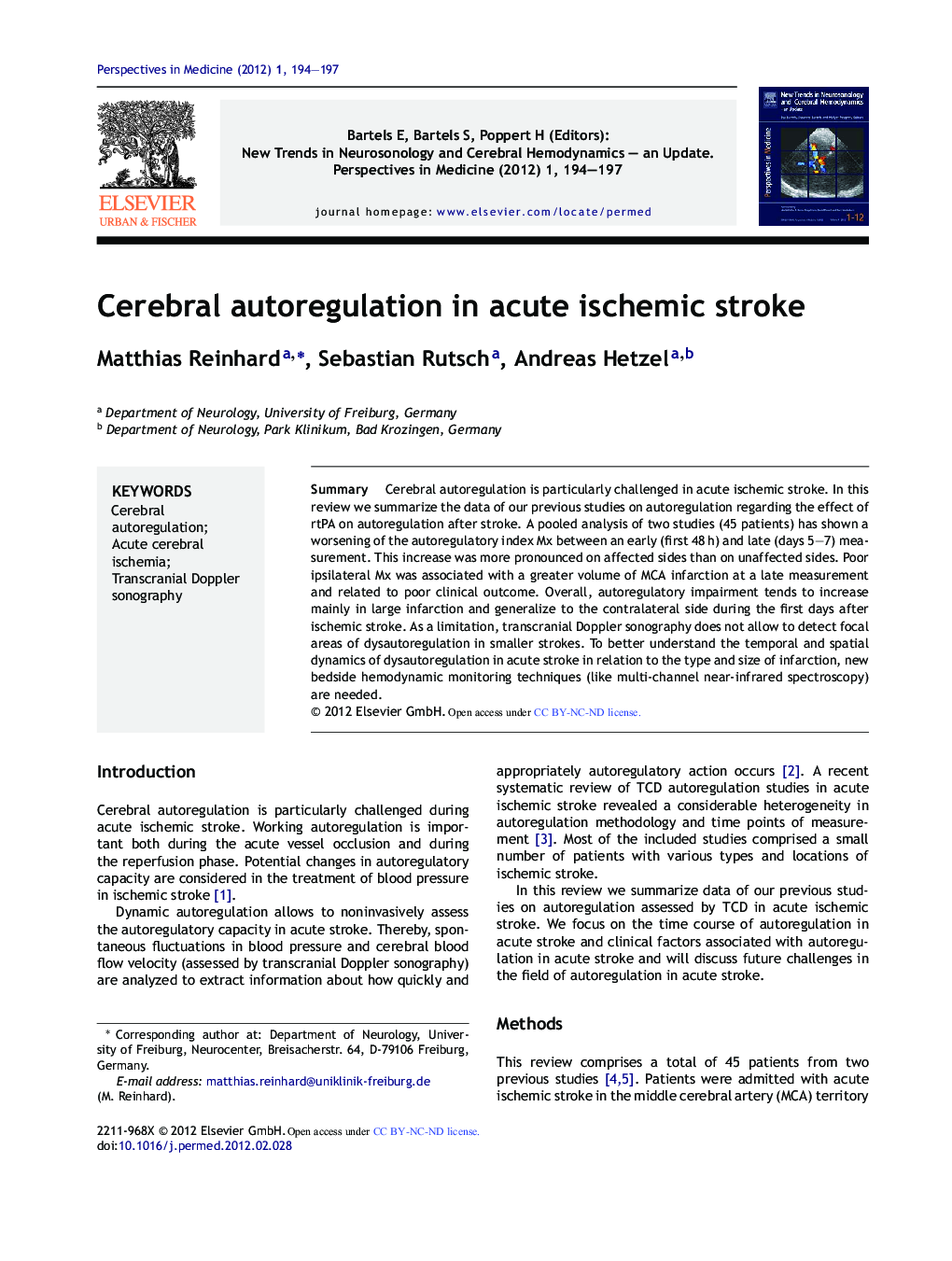| Article ID | Journal | Published Year | Pages | File Type |
|---|---|---|---|---|
| 331808 | Perspectives in Medicine | 2012 | 4 Pages |
SummaryCerebral autoregulation is particularly challenged in acute ischemic stroke. In this review we summarize the data of our previous studies on autoregulation regarding the effect of rtPA on autoregulation after stroke. A pooled analysis of two studies (45 patients) has shown a worsening of the autoregulatory index Mx between an early (first 48 h) and late (days 5–7) measurement. This increase was more pronounced on affected sides than on unaffected sides. Poor ipsilateral Mx was associated with a greater volume of MCA infarction at a late measurement and related to poor clinical outcome. Overall, autoregulatory impairment tends to increase mainly in large infarction and generalize to the contralateral side during the first days after ischemic stroke. As a limitation, transcranial Doppler sonography does not allow to detect focal areas of dysautoregulation in smaller strokes. To better understand the temporal and spatial dynamics of dysautoregulation in acute stroke in relation to the type and size of infarction, new bedside hemodynamic monitoring techniques (like multi-channel near-infrared spectroscopy) are needed.
